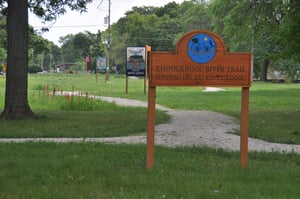Surfacing Hidden Wounds: Integrating Trauma Screening into Employment Readiness Programs
August 25, 2021 Posted by AHW Endowment

To learn more about this funded project, click here.
More than half of Americans report having at least one adverse childhood experience (ACE) – a traumatic experience such as physical or emotional abuse, neglect, or household dysfunction – before the age of 18. By adulthood, nearly 70 percent of adults in the U.S. report having experienced some type of traumatic event at least once in their lives.
While experiencing a traumatic event at any age will affect each person differently, studies continue to show that the greater number of adverse experiences a person has survived, the more likely they are to struggle in life. Their experiences can trigger neurological changes and psychological impacts that persist long after the event in the form of anxiety, depression, addiction, and other mental health or emotional issues.
The effect can be seen in poorer health outcomes – with trauma directly linked to increased rates of chronic disease and reduced life expectancy – as well as higher rates of poverty. Research links a history of trauma exposure to lower educational attainment and decreased economic self-sufficiency.
Through a three-year, $400,000 AHW investment, a Wisconsin-based community-academic partnership between the nonprofit Workforce Resource, Inc. (WRI), and the Medical College of Wisconsin (MCW) is testing a holistic solution, aiming to integrate screening and supports for those who have experienced trauma into WRI’s W-2 employment readiness program for low-income parents, families, and pregnant women.
The project was born out of WRI’s recognition that chronic unemployment and underemployment have root causes that needed a different approach to address.
“There’s so much more to the story of being unemployed or underemployed,” said Leslie Ruffalo, PhD, MS, associate professor in the MCW Department of Family and Community Medicine and partner on the three-year grant with Courtney Barry, PsyD, MS, a clinical psychologist in the MCW Department of Psychiatry and Behavioral Medicine. “It’s not merely about there being enough jobs or individuals being motivated to get a job. So many individuals in need of [employment] services have a lot of complicated psychosocial factors that are impacting their health and their ability to obtain and retain employment.”
“[It’s] about breaking that cycle of instability." - Tayna Potter, Workforce Resource, Inc.
Building on promising research done in large metropolitan areas, including in Milwaukee, the three-year project is integrating a screening protocol called T-SBIRT, which stands for trauma screening, brief intervention, and referral to treatment, into W-2 case management services for the first time.
Developed by Dimitri Topitzes, PhD, a professor at the University of Wisconsin-Milwaukee and consultant on the project, the protocol is an extension on a model widely used for addressing alcohol and drug misuse. However, this version is focused on the experience and impact of trauma.
Under the T-SBIRT model, a brief set of screening questions are asked universally to clients. The answers, which are often remarkably candid, help the client’s support system of case managers identify each client’s needs. In the case of work readiness and employment programs, they are needs that most often go well beyond a standard job application assistance.
“A lot of our clients are working to meet very basic needs like access to food, stable housing, school supplies for kids,” said Tanya Potter, T-SBIRT project coordinator at Workforce Resource, Inc. “When you can’t meet those basic needs, your health and your mental health are not a priority.”
The T-SBIRT protocol opens the door for case managers to help clients address those basic needs, and, importantly, opens up an entirely new way to identify mental health or other resources that can help clients on a path toward healing, self-sufficiency, and health.
“[It’s] about breaking that cycle of instability,” said Potter.
Today, the project is in its early stages, nearing completion of a pilot phase, with Potter and a small team testing the protocol in Ashland and Eau Claire counties while Ruffalo and Berry conduct an evaluation. The results will be used to modify WRI’s internal protocols and processes before expanding the project to 14 additional counties across northern Wisconsin.
“This is an evidence-based model,” said Ruffalo. “But there are still some context-specific factors we want to understand to implement it optimally and to make it work for all of the counties that WRI serves in northwestern Wisconsin.”
The team also has its eyes set on how the lessons from this program can inform other programs within WRI as well as work readiness and employment programming across the state. Today, though, the focus is on first getting it right for every individual that WRI connects with daily.
“Trauma is a real barrier, and it has real health consequences,” said Potter. “I am really hopeful that this work can be a launching pad for individuals. That we can take them from where they are, where they’ve been struggling or feeling like there’s no hope to help them become stable, secure, and advance forward.”




